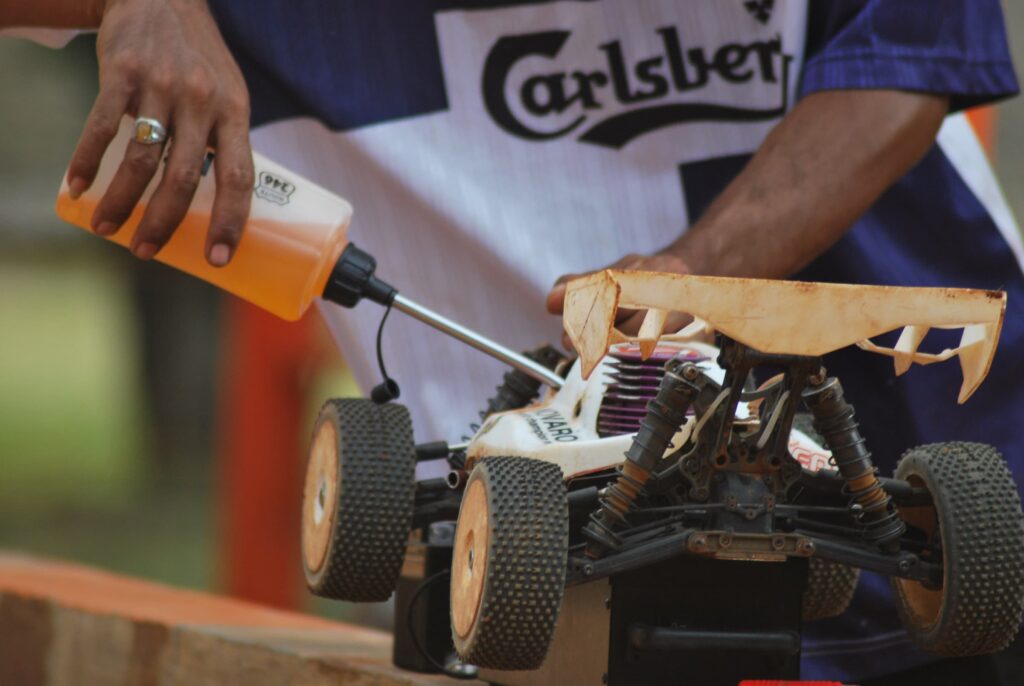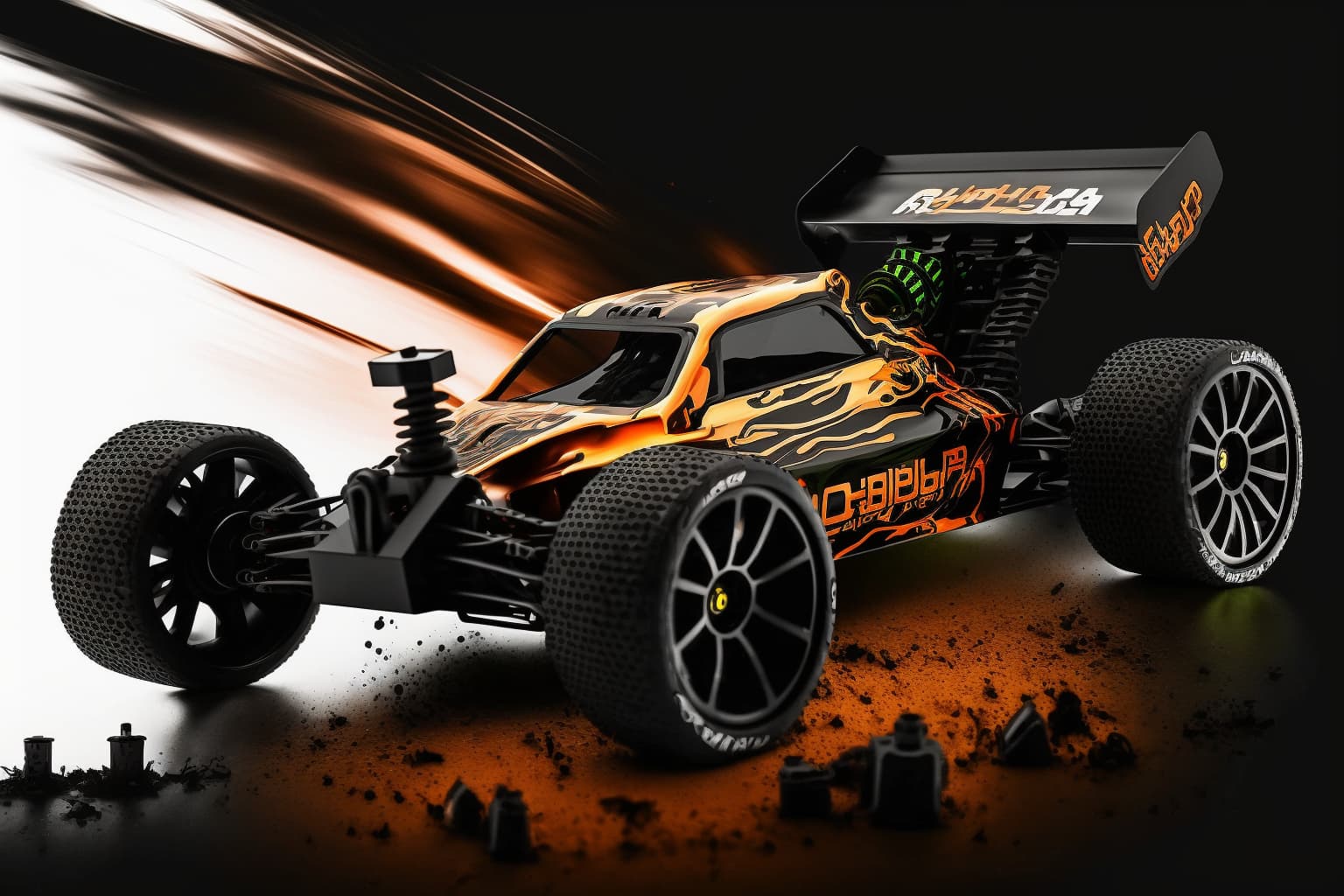Performance RC Cars | An Entry Level Guide
Technology has been moving along at an incredible pace, seemingly making it a point to prove to everyone that it does indeed grow exponentially. The world of RC cars is no exception, as we’ve seen some truly amazing advancements over the last decade.
We’re going to take a look at what makes RC cars today superior to their outdated counterparts, what to look for when considering buying one, and what factors are most important in the competitive race world.
The RC Battery and Motor Evolution
RC batteries and motors have made drastic leaps in the last two decades, which have been the driving force behind the increases we’ve seen in RC car performance. The metrics have improved across the board, and for good reason.
RC Batteries | NiMH vs LiPo
Back in 1998 when I first entered the RC race world, 2000mAh Nickel-Metal Hydride (NiMH) batteries were all the rave. This seems an almost quaint notion at the present moment, as Lithium Polymer (LiPo) batteries dominate the scene by increasing nominal voltage, decreasing weight, lowering the voltage-discharge rate, and more.
Four-cell LiPo batteries typically range from 5000 to 11000 milliamp hours (mAh), offering much higher capacity at a fraction of the weight.
All of these factors play a role in bettering performance, but let’s just take a look at the weight difference for a moment, as weight plays a huge role in RC car racing.
Battery Weight
LiPo batteries have a lighter casing and higher nominal voltage, each of which contributes to the lessened weight. In the race world, less weight equals more speed. The following graph reflects a compelling view of the weight difference between the two types of batteries at equal output:
The data reflects an obvious advantage to a LiPo based platform, and any serious racer today wouldn’t even consider NiMH a viable option.

RC Motors | Brushless vs Brushed
The advent of brushless motors (along with LiPo batteries) entered the competitive RC world around 2005. Brushless motors were a huge improvement on their brushed counterparts, allowing for better speed control, power distribution, and heat generation. Choosing the best RC motor can be tricky, and is kind of a black art in the RC race world depending on your class and skill level.
Brushless motors are used in almost all cases over brushed motors. The only RC niche still using brushed motors at a competitive level is RC crawling. The argument is that brushed motors offer a small advantage by offering better throttle control at extremely low RPMs, which can be a plus when gradually climbing up a miniature rock cliff.
Electronic Speed Controls (ESCs)
ESCs are at the heart of any performance RC car, and experienced racers will tell you that the quality of this particular component can make or break your chances of victory when competing at a high level.
Like motors, ESCs can be broken down into two main categories: brushed and brushless. Brushless ESCs must be paired with a brushless motor, and so is the case with brushed. Brushless ESCs facilitate many of the benefits we’ve mentioned in brushless motors, but the benefits don’t stop there.
ESC Advanced Features
A performance speed control will come with many features that professional racers utilize to give them an edge. Adjustable pulse width modulation (PWM) is a huge feature that has come to be expected among high end ESCs, allowing drivers to fine tune power distribution.
Another important feature many racers desire nowadays is real-time data logging. Advanced speed controls will send feedback wirelessly to a smartphone device, serving as an indicator the driver can use to tweak their settings in between race heats.
Choosing the Best RC Car for Competition

If you’re considering entering the RC race world as a novice, there’s quite a bit to consider when choosing the right car. The main two factors you’ll want to consider is the size of the car and whether you want a kit car or RTR (ready to race) car.
Fast RTR cars come either fully complete, or will require certain components to finish the build. Usually, the only thing needed to finish off a RTR car is a charger and battery, but in some cases you’ll need a servo or some other small peripheral component as well. This will be listed in the product description, so pay close attention when you place your order.
If you’re looking for a well-researched list of fast RC cars, the guys at RC Soldier put together an excellent list while adhering to the rigorous standards typically held by guys in the competitive race circuit.
Choosing the Right Size (Scale)
Generally speaking, 1:10 scale RC cars are the most popular size. However, you don’t want to rely on a vague “popularity metric” when choosing the right car to get into racing. You’re better off calling your local track and asking what scales they race, the types of racing they accommodate, and what equipment requirements they have if any.
Overview
Performance RC cars have come a long way over the last decade. We’ve described the increase in battery capacity, decreased weight, improved motor design, and advanced ESC features that all add up to some serious tech worthy of a day at the track.
If you’re looking to get your feet wet in the RC car racing circuit, there’s no better time than now. The people are great, the cost is reasonable, and the learning curve isn’t too steep. It’s a hobby that’s gratifying, challenging, and will always have you awaiting your next race day!

